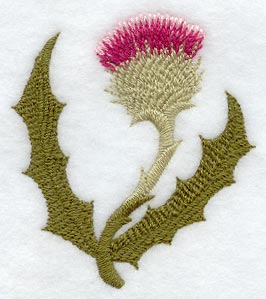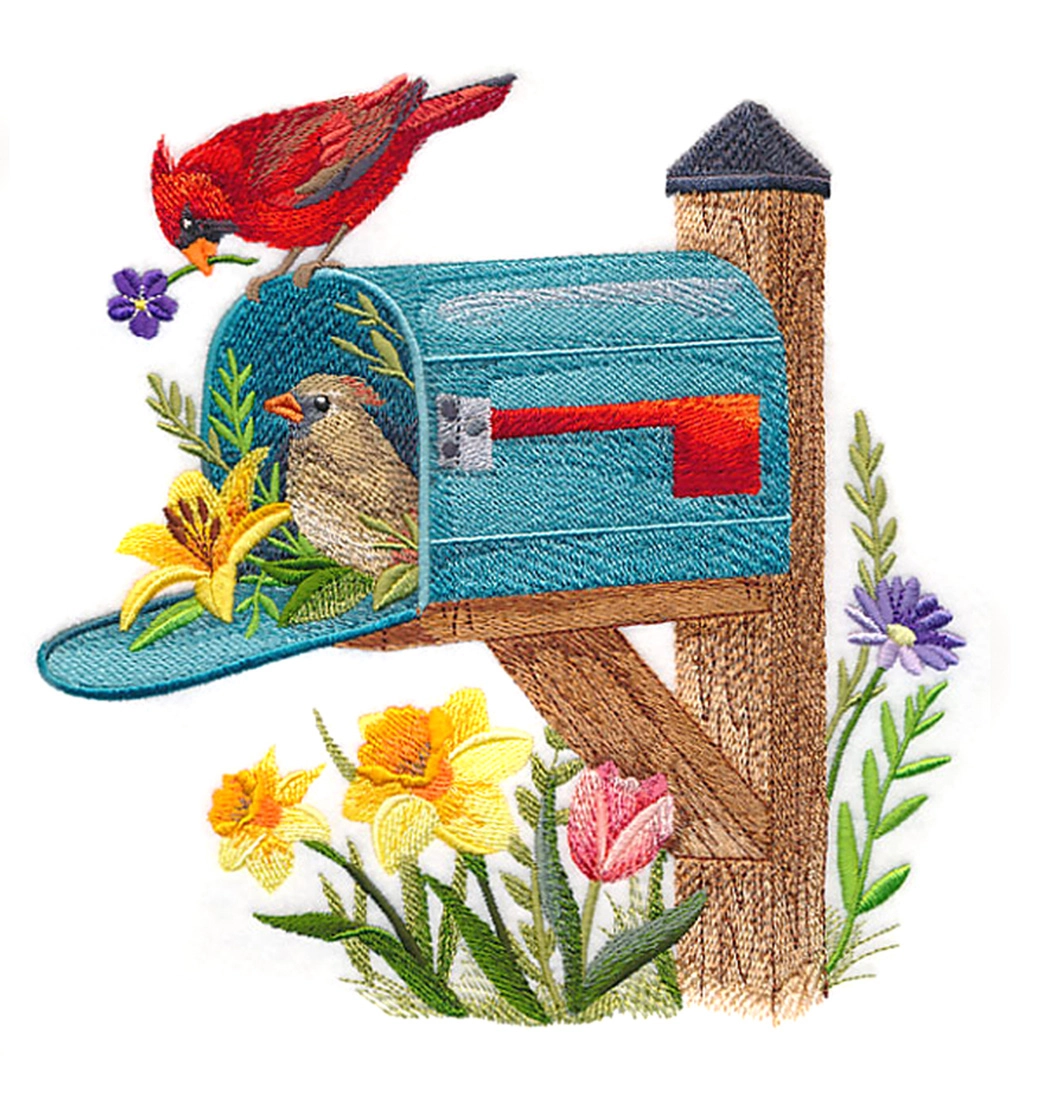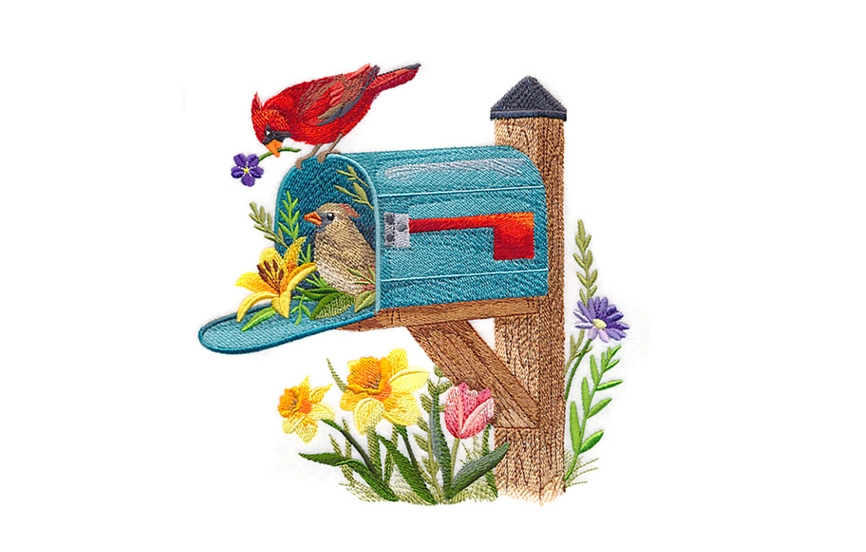Over the past several months, more and more thread companies have begun advertising heavier weights of thread. Composed of a wool and acrylic blend, these threads are fun and interesting to work with. They are strong, because of the acrylic component, and soft and lush because of the wool component.
It's always interesting to explore a new product to see how it can be applied to our embroidery art. I was intrigued by the texture of the wool-like thread -- it reminded me of traditional crewel work that one sees in tapestries. Bringing that classic look to the embroidery machine was a challenge that I was eager to tackle. The "thick thread" designs at the Embroidery Library are digitized for 12 weight thread, and I'd like to share some ideas and tips with you that will help when you are working with the "thick thread" designs.
Designs Used
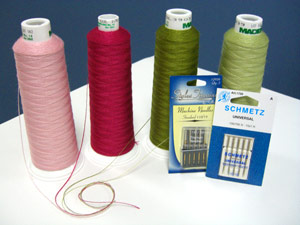
Let's start with the thread. There are a couple of different brands on the market, but I worked with Madeira's Burmilana line. Another brand is Monet embroidery thread. If you are looking for a place to purchase the 12 weight Burmilana thread, you'll find several sources on the Internet. Go to www.Google.com and search there. You can also purchase it directly from www.MadeiraUsa.com, and www.TheSewphisticatedStitcher.com.
Madeira's Burmilana thread is 30% wool and 70% acrylic. The thread is sold in 1090 yard cones, 437 yard spools, and 220 yard spools. The 220 yard spools are called "Lana" thread.
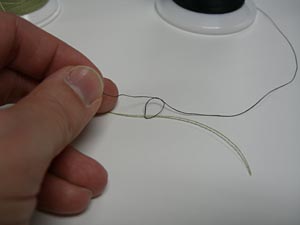
Next, needle choice. When embroidering with thick thread, you'll need to use a needle with a large eye. The thick thread needs more room to move through the needle, which lessens the friction (and also makes it easier to thread the needle!). We recommend using a size 110/18 needle, titanium or universal. Madeira makes special needles for embroidering with thick thread, known as the Lana needle.
You might notice "fuzz" building up on your machine or under the throat plate as you work with this thicker thread. This is normal -- it's a result of the thread passing through the eye of a needle. You can use a small vacuum cleaner designed for cleaning keyboards to remove the fuzz.
Threading the needle with thick thread. If you're using a 110/18 needle, then you will likely have little trouble threading the needle with the thick thread. But, if you do, here's a little "shortcut" using a 40 weight thread "lead."
Tie the 40 weight thread to the thick thread that you want to use.

Thread the needle with the 40 weight thread
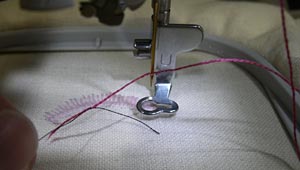
Pull the 40 weight thread so that thick thread comes through the needle.
Whenever you need to change thread, just tie the new 12 weight onto the "old" color, and pull it through.
Adjust the thread tension to account for the thick thread. The "normal" tension on embroidery machines is set for 40 weight thread. Because the 12 weight is much thicker, you may find that you need to loosen the upper thread tension. I opened the upper thread tension plates as much as possible; you may find that you get good results with a lesser degree of change.
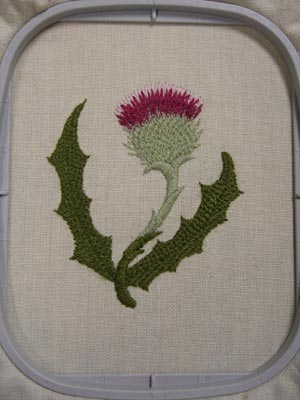
After you have the right needle and good tension, embroidering with thick thread is just like embroidering with any other kind of thread. The same rules about hooping and stabilizer apply (i.e. hoop the fabric with the stabilizer, choose the stabilizer according to the fabric weight, regular bobbin thread).
Remember, too, that a design needs to be specially digitized for thicker thread. If you use thick thread with a "regular" embroidery design, you won't get very far. You'll find that the thread will ball up underneath and jam the hoop. Designs at the Embroidery Library that are digitized for "thick thread" are clearly marked with the words "thick thread" in the name.
Conversely, designs that are digitized for thick thread shouldn't be used with 40 weight thread. The coverage won't be sufficient.
Above all, enjoy working with thick thread. It really adds a beautiful component to embroidery projects.
